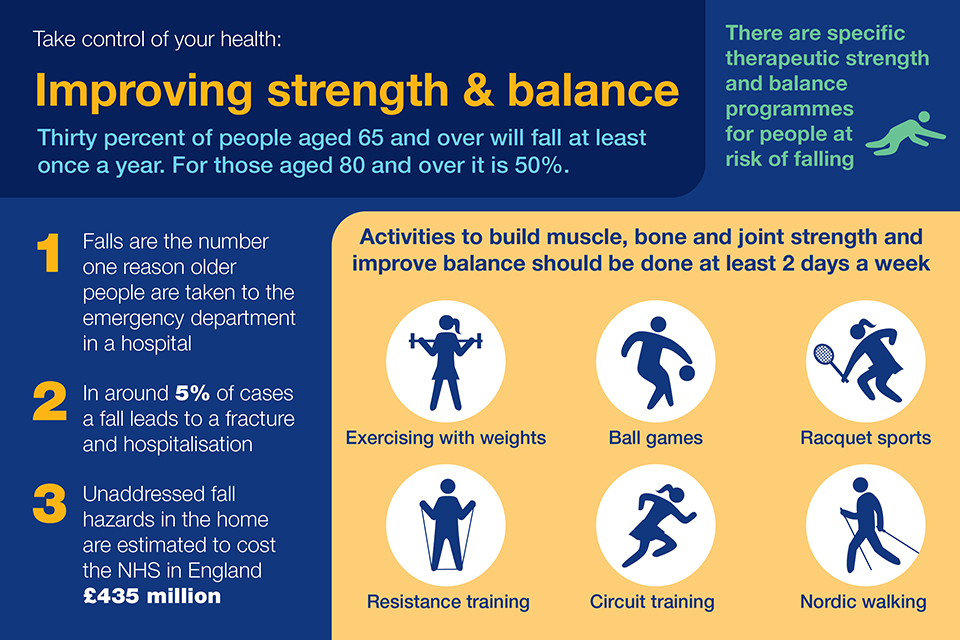The Only Guide for Dementia Fall Risk
Table of ContentsSome Known Details About Dementia Fall Risk Getting The Dementia Fall Risk To WorkWhat Does Dementia Fall Risk Mean?Facts About Dementia Fall Risk Revealed
An autumn risk analysis checks to see just how likely it is that you will certainly fall. The evaluation typically includes: This consists of a collection of inquiries regarding your total health and wellness and if you have actually had previous drops or troubles with balance, standing, and/or strolling.STEADI consists of testing, evaluating, and treatment. Interventions are recommendations that might reduce your danger of falling. STEADI includes 3 actions: you for your threat of succumbing to your risk factors that can be boosted to try to avoid drops (for instance, balance problems, damaged vision) to decrease your risk of dropping by making use of effective approaches (for instance, giving education and learning and resources), you may be asked numerous concerns consisting of: Have you fallen in the previous year? Do you really feel unsteady when standing or strolling? Are you stressed over dropping?, your service provider will certainly examine your strength, balance, and stride, using the complying with loss analysis devices: This test checks your gait.
If it takes you 12 secs or more, it may indicate you are at greater danger for a fall. This examination checks toughness and equilibrium.
The placements will obtain harder as you go. Stand with your feet side-by-side. Relocate one foot halfway onward, so the instep is touching the huge toe of your other foot. Move one foot fully in front of the other, so the toes are touching the heel of your other foot.
6 Easy Facts About Dementia Fall Risk Described
A lot of falls take place as a result of multiple adding variables; therefore, handling the risk of falling begins with recognizing the elements that add to drop danger - Dementia Fall Risk. Several of the most relevant danger factors consist of: History of previous fallsChronic medical conditionsAcute illnessImpaired gait and balance, lower extremity weaknessCognitive impairmentChanges in visionCertain high-risk medicines and polypharmacyEnvironmental factors can additionally boost the risk for falls, consisting of: Poor lightingUneven or damaged flooringWet or slippery floorsMissing or harmed handrails and get barsDamaged or incorrectly equipped equipment, such as beds, wheelchairs, or walkersImproper use of assistive devicesInadequate guidance of the people living in the NF, consisting of those that display aggressive behaviorsA successful autumn risk administration program needs a thorough medical assessment, with input from all members of the interdisciplinary group

The care strategy ought to additionally include treatments that are system-based, such as those that promote a risk-free environment (suitable illumination, hand rails, order bars, and so on). The performance of the treatments ought to be evaluated periodically, and the treatment plan modified as necessary to mirror changes in the fall risk analysis. Executing an autumn threat administration system making use of evidence-based finest technique can lower the occurrence of drops in the NF, while restricting the potential for fall-related injuries.
Some Known Facts About Dementia Fall Risk.
The AGS/BGS guideline advises evaluating all adults matured 65 years and older for loss risk annually. This see this website screening includes asking individuals whether they have dropped 2 or even more times in the previous year or sought clinical attention for a fall, or, if they have actually not fallen, whether they feel unstable when strolling.
People who have fallen once without injury ought to have their balance and stride reviewed; those with gait or balance abnormalities need to receive added assessment. A history of 1 autumn without injury and without gait or equilibrium issues does not require further assessment beyond ongoing annual fall risk screening. Dementia Fall Risk. A fall risk assessment is required as component of the Welcome to Medicare exam

Some Known Details About Dementia Fall Risk
Documenting a falls history is among the top quality indicators for loss avoidance and monitoring. An important part of threat evaluation is a medicine review. A number of courses of medicines enhance loss danger (Table 2). copyright drugs specifically are independent predictors of drops. These medicines tend to be sedating, alter the sensorium, and hinder balance and gait.
Postural hypotension can frequently be eased by decreasing the dosage of blood pressurelowering medicines and/or quiting medications that have orthostatic hypotension as an adverse effects. Use above-the-knee assistance tube and sleeping with the head of the bed raised may likewise lower have a peek at this website postural decreases in blood stress. The advisable components of a fall-focused physical exam are received Box 1.

A pull time above or equal to 12 secs suggests high fall danger. The 30-Second Chair Stand test examines reduced extremity stamina and balance. Being unable to stand from a chair of knee elevation without utilizing one's arms suggests raised fall risk. The 4-Stage Balance examination assesses static equilibrium by having the patient stand in 4 positions, each progressively more tough.